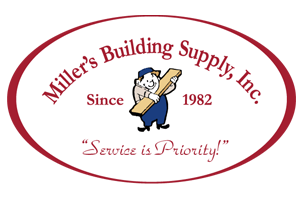
Fall Protection
Residential contractors are subject to the U.S. Occupational Safety and Health Administration's Fall Protection Standard (29 CFR 1926.501). In fact, OSHA has made fall protection a priority for inspections and fines. Local jurisdictions to rely on whistleblowers and public reporting to aid inspectors finding sites where infractions may occur. To comply with OSHA fall protection rules, make sure you have a written plan, proper training, and the right equipment.
Contractors are required to provide fall protection for any worker six feet or more above a lower level who is not on a ladder or scaffold. This can be accomplished with "conventional" fall protection – guardrails, safety nets and personal fall arrest systems – or with a custom solution engineered for the particular job. If workers are on ladders or scaffolds, other requirements come into effect.
The illustration below highlights items an inspector will look for. The illustration is for reference only and is not meant as legal advice. For official up-to-date requirements check osha.gov or consult with a certified OSHA trainer (see below).
Inspection Infographic
Residential remodelers are now subject to OSHA’s Fall Protection Standard (29 CFR 1926.501). In most cases, this means that anyone working 6 feet or more above a lower level who is not on a ladder or a scaffold needs a harness and anchored safety line. If they are on ladders or scaffolds, other requirements come into effect. Here are the things that an OSHA inspector will look for.

- Worked on pitched roof with harness
- Anchor point at top of roof
- Scaffold with guardrail along side and at ends
- Area below scaffold barricaded
- Ladder extending 3 feet above the upper surface
- Ladder on stable surface
- Horizontal distance from ladder to hours 1/4 the working length of the ladder
- Worker on ladder with harness attached to anchor point in window
- Guardrails in all windows and doors
- Plank to door with guardrail
- Stairwell or other hole covered by plywood labeled "Hole"
- Plywood box placed over skylight on rood to keep worker from falling through
- Base of scaffold must have requisite strength and structural integrity
Additional Requirements
OSHA also requires a written safety plan, proof that employees have read the plan and received basic safety training, documentation of ongoing weekly training, and a plan for ensuring compliance.
Training. Basic training consists of a 10-hour course put on by a certified trainer and covers all parts of the Fall Protection standard—officially, 29 CFR 1926.501, Subparts M (Duty To Have Fall Protection), X (Ladders and Scaffolds) and L (Scaffolding Training). The class also covers the basics of writing a safety manual.
An online search will yield results for OSHA fall protection trainers in each state.
Safety meetings. Besides equipment and basic training, the contractor must also hold weekly jobsite safety meetings or "Toolbox Talks." An inspector will want see how often you are doing training, so it's a good idea to have a sign in sheet that notes the specific topics covered.
Software is available to help contractors plan and record Toolbox Talks. See the Safety Meeting App.
Other rules. Note that residential builders and remodelers are subject to a range of OSHA rules many aren't aware of. An inspector who visits a job to investigate a fall hazard will likely walk around looking for other violations, which could include workers without safety glasses, saws without guards or ungrounded extension cords.

